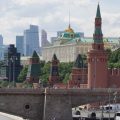
In a significant development, Ukrainian President Volodymyr Zelenskyy publicly acknowledged for the first time on Monday that Ukrainian forces are operating within Russia’s Belgorod region. This confirmation comes as Ukrainian troops continue their presence in neighboring Russian regions, eight months after an initial cross-border incursion.
Zelenskyy’s statement, made during his nightly video address, cited a report from Ukraine’s top commander, Oleksandr Syrskyi, detailing Ukrainian activity in both the Belgorod and Kursk regions. The President emphasized the strategic rationale behind these operations, highlighting their role in protecting Ukrainian towns near the border and drawing Russian forces away from the main conflict zones in eastern Ukraine.
The President specifically mentioned the successful performance of Ukraine’s 225th Assault Regiment in the area. He reiterated the overall goal of these actions: to protect Ukrainian territories in the Sumy and Kharkiv regions from Russian aggression. While acknowledging Russia’s recapture of some territory in the Kursk region, Zelenskyy maintained that the operation has effectively reduced pressure on other key front lines, particularly in the Donetsk region.
This announcement follows previous, less explicit references by Zelenskyy to Ukrainian military actions in areas bordering the Kursk region. Reports from Russian military bloggers have corroborated the presence of Ukrainian forces in the Belgorod region, indicating ongoing clashes between Ukrainian and Russian troops. The situation remains fluid, with conflicting reports emerging, such as Russia’s claim of capturing the village of Basivka in Ukraine’s Sumy region, a claim promptly denied by a Ukrainian military spokesperson.
The ongoing activity underscores the evolving nature of the conflict and Ukraine’s determination to defend its territory. It also highlights the strategic complexities of the war, with both sides employing tactics designed to shift the balance of power and protect their interests along the volatile border regions.










